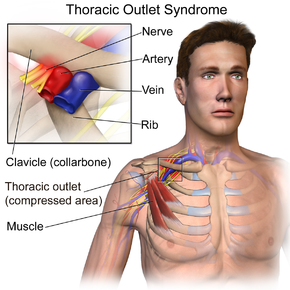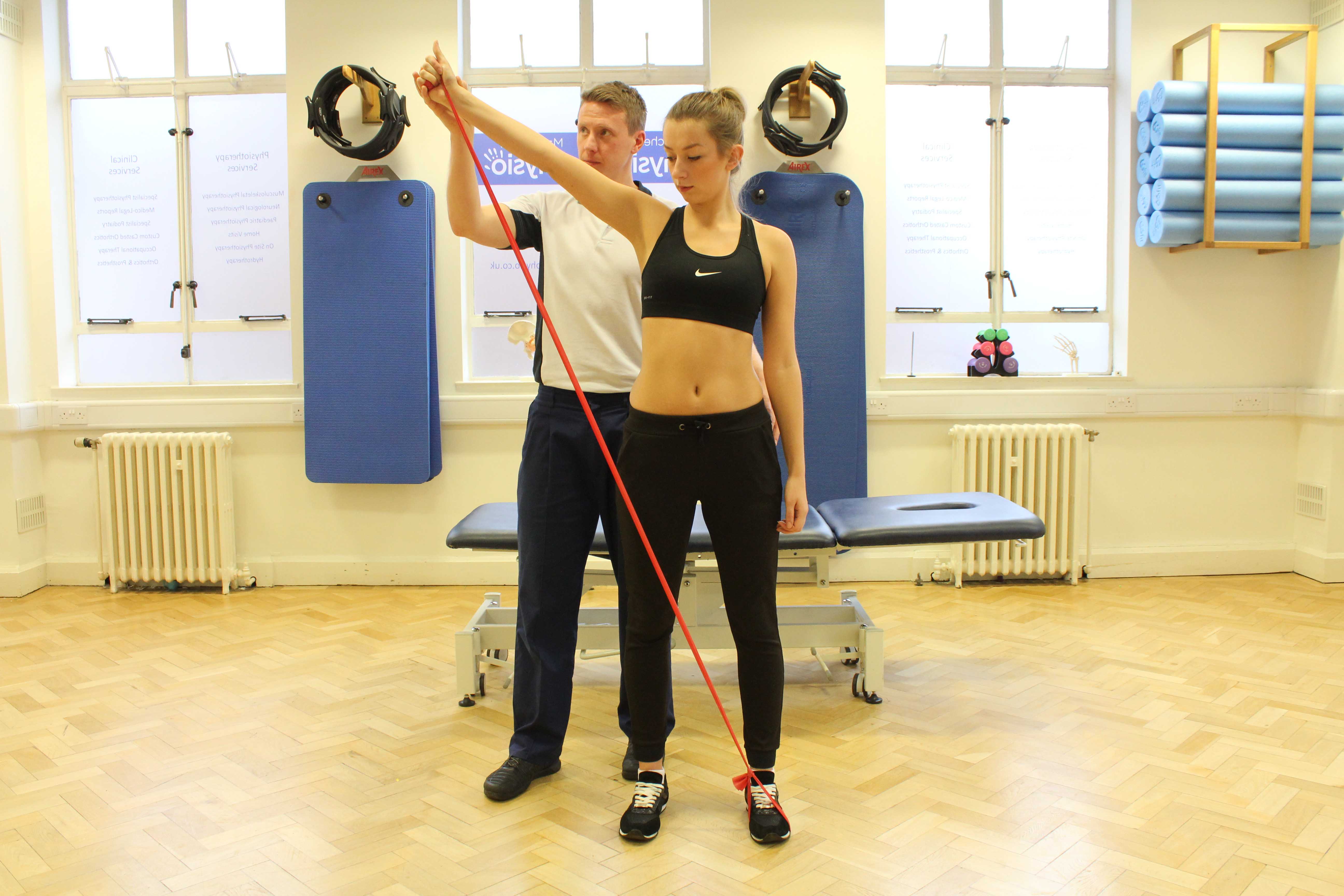nalco group
bone, muscle & joint pain physio
BOOK NOW / WHATSAPP ABOUT YOUR PAIN OR INJURY
- NOVENA 10 Sinaran Drive, Novena Medical Center #10-09, Singapore 307506
- TAMPINES 9 Tampines Grande #01-20 Singapore 528735
- SERANGOON 265 Serangoon Central Drive #04-269 Singapore 550265
Home > Blog > Physiotherapy > Conditions > Neck Pain > Shoulder Pain > Thoracic Outlet Syndrome Physiotherapy
Thoracic Outlet Syndrome Physiotherapy

Thoracic Outlet Syndrome (TOS) is a potentially painful and disabling condition of the upper extremity. It happens due to the compression of structures in the thoracic outlet, which refers to a space just above the first rib, and behind the clavicle (collar bone).
Due to the range and variety of signs and symptoms that can lead to a diagnosis of TOS, the incidence rates of the condition currently are unknown. Our senior physiotherapists work with patients with thoracic outlet syndrome to
- ease their symptoms including pain relief
- restore their
upper-body function and participation in daily living and return to work
- improving quality of life
How Does it Feel?
Because TOS generally is classified based upon the type of structures compressed, the symptoms experienced may vary. However, more than 90% of TOS cases are thought to be neurogenic (nerve compression) in nature (categories 3 and 4 below).
Arterial TOS
- Pain in the hand; rarely in shoulder or neck
- Coldness or cold intolerance
- Numbness and tingling
Venous TOS
- Pain in the arm
- Swelling in the arm
- Change in arm coloration (appears bluish)
- Feeling of heaviness in the arm
- Numbness and tingling in fingers and hands
True Neurogenic TOS
- Pain, numbness, and tingling in the hand, arm, shoulder, and often the neck
- Headaches
- Numbness and tingling of the arm, often waking the individual up at night
- Hand clumsiness
- Intolerance to cold
- Hand coldness and color changes
Disputed Neurogenic TOS
- Pain, numbness and tingling in the hand, arm, shoulder and often the neck
- Headaches
- Numbness and tingling of the arm, often waking the individual up at night
- Hand clumsiness
- Intolerance to cold
- Hand coldness and color changes
- Symptoms greater at night vs day
- Tests may come back normal (hence, the term "disputed").
How Is thoracic outlet syndrome Diagnosed?
Diagnosis of TOS begins with a thorough health history and clinical examination.
Our senior physiotherapists will likely check for color changes in the affected area, and gently attempt to provoke symptoms by moving the affected limb in different directions.
You also may be referred for diagnostic testing, such as a Doppler ultrasound, which can confirm arterial and venous TOS, or nerve conduction velocity testing to help confirm a true neurogenic TOS.
We may be the first to recognize an onset of thoracic outlet syndrome, because of its effects on your physical function.
We may ask you:
- When did you begin experiencing these symptoms, and when are they the worst?
- Have you noticed any change in your symptoms when the temperature changes?
- Have you noticed any significant changes in your ability to perform physical tasks that require hand movements?
- Have you noticed any changes in the appearance of your arm or hand?
In addition, we will rule out other conditions, which may mimic this disorder.
We may ask you to fill out a questionnaire in order to better understand your physical state, and to screen for the presence of other conditions.
how our senior physiotherapists can help you

Once you have received a diagnosis of thoracic outlet syndrome, our senior physical therapists will work with you to develop a treatment plan to help ease the discomfort, and improve your ability to perform daily activities.
Most research on this condition recommends a treatment plan that involves physical therapy to help ease your symptoms and improve function.
Physical therapy treatments may include:
Manual Therapy
Manual (hands-on) therapy may be applied to manipulate or mobilize the nerves of the arm to help reduce symptoms, such as pain and numbness/tingling. Manual therapy may include
We also may attempt to gently mobilize your first rib and/or collar bone.
Pain Relief
We may employ the following pain relief physiotherapy modalities to help relief pain:
- cold therapy (gentle)
- heat therapy (gentle)
- ultrasound therapy
- radio-frequency Indiba physiotherapy
- dry needling
Movement and Strengthening Exercises
We will teach you muscle-strengthening exercises to improve movement and strength in the affected area.
Education
We will teach you strategies that can help minimize your symptoms while performing your daily functional activities.
Activity modification and postural strategies
We will teach you positions and strategies to place less stress on the structures involved with thoracic outlet syndrome.
